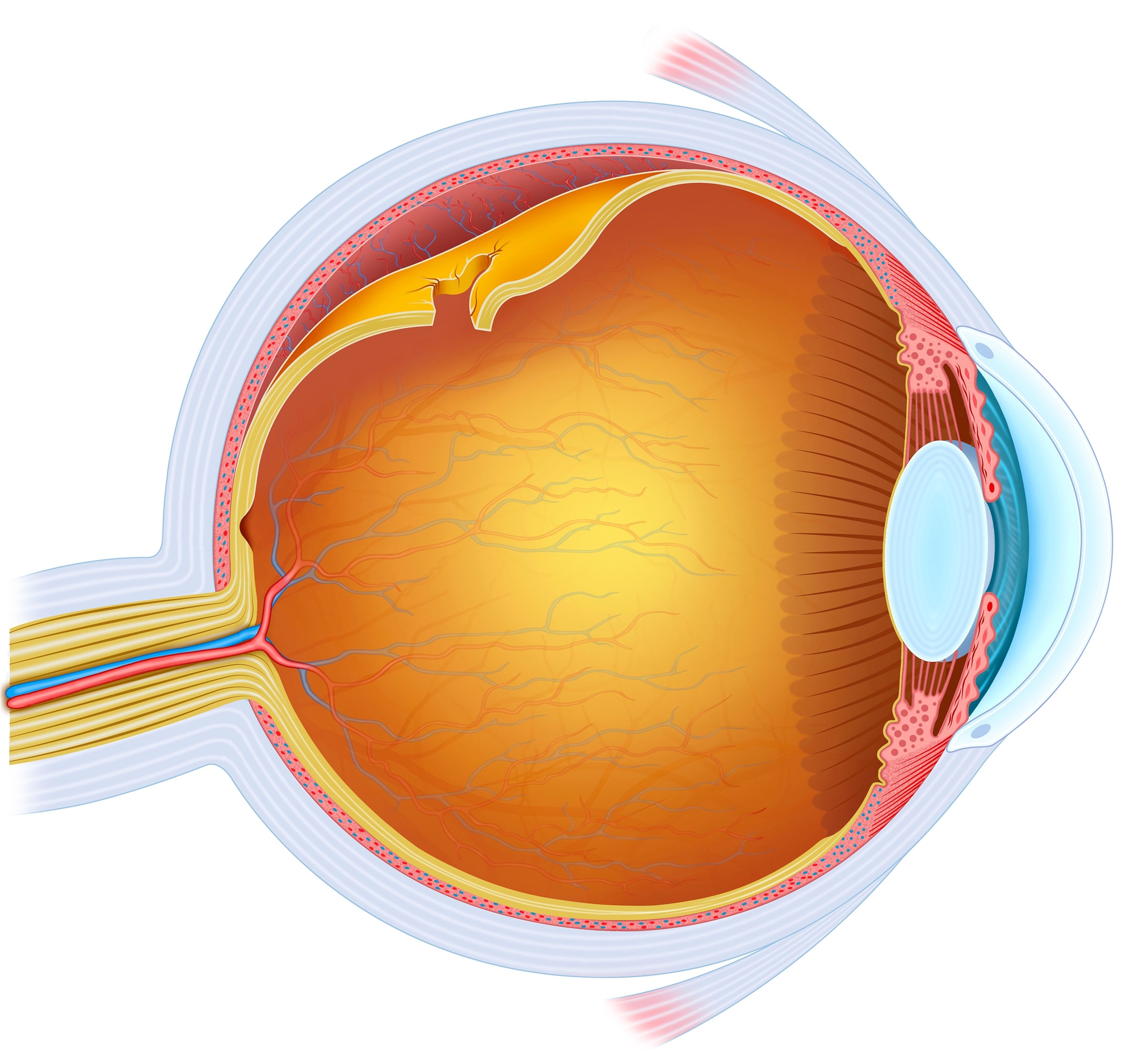What is the incidence rate of retinal detachment?
- The incidence rate of retinal detachment in the United States is 1 in every 10,000 people. Based on this estimation, there are approximately 2,000 people in Taiwan who suffer from the disease. Nonetheless retinal detachment is closely related to myopia and hence the incidence rate of retinal detachment in Taiwan is probably even higher.
- Retinal detachment is one of the acute diseases in ophthalmology and must be treated in few days or else the vision will deteriate and the patients may be blind.
What is retinal detachment?
- The retina is a thin and fine sensory tissue layer lined on the back wall of the eyeball; it is the tissue for the eyeball to substantially sense lighting, shadow and colors. It resembles the film of camera; however the acquisition of film is rather easy and cheap for replacement at any time. The retina is highly valuable and could not be replaced based on current medicine.
- The retina we address normally refers to the sensory retina, which normally closely and firmly attaches to the retinal pigment epithelium. These two layers mostly rely on the outer layer of meridian for supply of nutrients. Once the sensory retina and pigment epithelium are separated and results in retinal detachment, the retina of sensory layer will lose most of the nutrition supply while the function gradually degenerates.
- The patients shall need to restore the retina of sensory perception, so that the close adhesion with the retinal pigment epithelium will preserve good vision.

What are the types of retinal detachment?
Based on the causes, retinal detachment can be divided into three types: rhegmatogenous, tractional and exudative.
- The retinal detachment that requires surgical treatment as soon as possible refers to the rhegmatogenous retinal detachment which mostly occurs to patients of myopia and particularly to those with -4.0~6.0 diopters. However it could happen to emmetropia (namely normal refractive condition in eyes) and the hyperopia. Moreover, the trauma of eyeball could induce retinal attachment.
- Central serous retinopathy is a type of exudative retinal detachment that frequently occurs to male aged 30-40 years old who require long period of vision use or face with enormous work stress.
- Proliferative diabetic retinopathy or trauma could lead to the pulling of vitreous body and even leads to tractional retinal detachment.
What is myodesopsia?
- Some people see black dots in their eyes that appear to be mosquitos flying in front of them. When they try to kill the mosquitoes, they realize that these are not mosquitos but black dots in their eyes. These black dots will move even when the eyes stay still. The phenomenon of degeneration of vitreous body and deformation of shape, sometimes accompanied by spider web-like semi-transparent bugs of plankton is known myodesopsia, which is caused by the degeneration and deformation of vitreous body.
Myodesopsia could be the forewarning of retinal detachment.
- The patients will not have pain or itchiness in times of retinal detachment but will see a large area of black shadow or will see things with distorted image, degenerated vision or change of colors.
- Some people will even have some prodromes such as seeing black dots, black shadow, spider web, or black cloud floating in front of the eyes, or sudden sparkles in front of the eyes, which can be perceived even when the eyes are closed.
- Hence persons with the abovementioned symptoms are advised to consult with an ophthalmologist to have pupil dilation and thorough examination of the eyes.
- Nonetheless persons with the foregoing prodromes do not necessarily have problems with the eyes. Most of the eyes are basically normal but just have myodesopsia.
Where to seek for treatment on retinal detachment?
- Retinal detachment is completely different from cataract and could not be treated by general ophthalmologists but will require the treatment by ophthalmologists having received training of retinal surgery. Moreover, the techniques and experience in this disease will considerably affect the success rate of the operation.
- The treatment on rhegmatogenous or tractional retinal detachment is a considerably fine and complex operation.
- There are many types of operations and the success rate after operation in retinal experts with excellent techniques and experience is at least 80% from early discovery.
- Exudative retinal detachment can be treated by conservative treatment, such as laser beam radiation therapy or freezing treatment.

